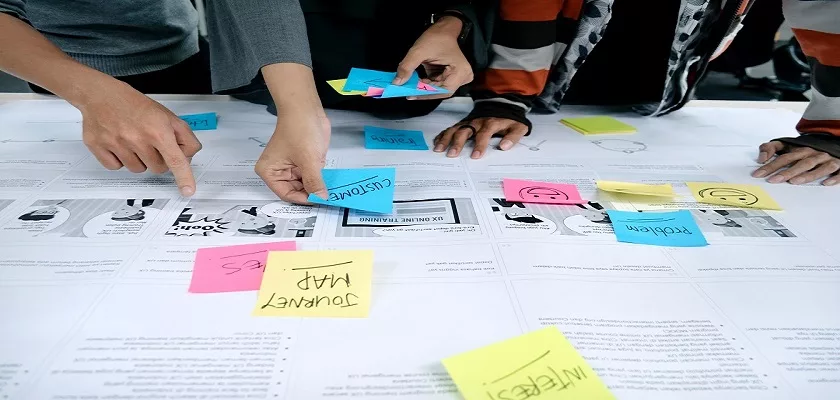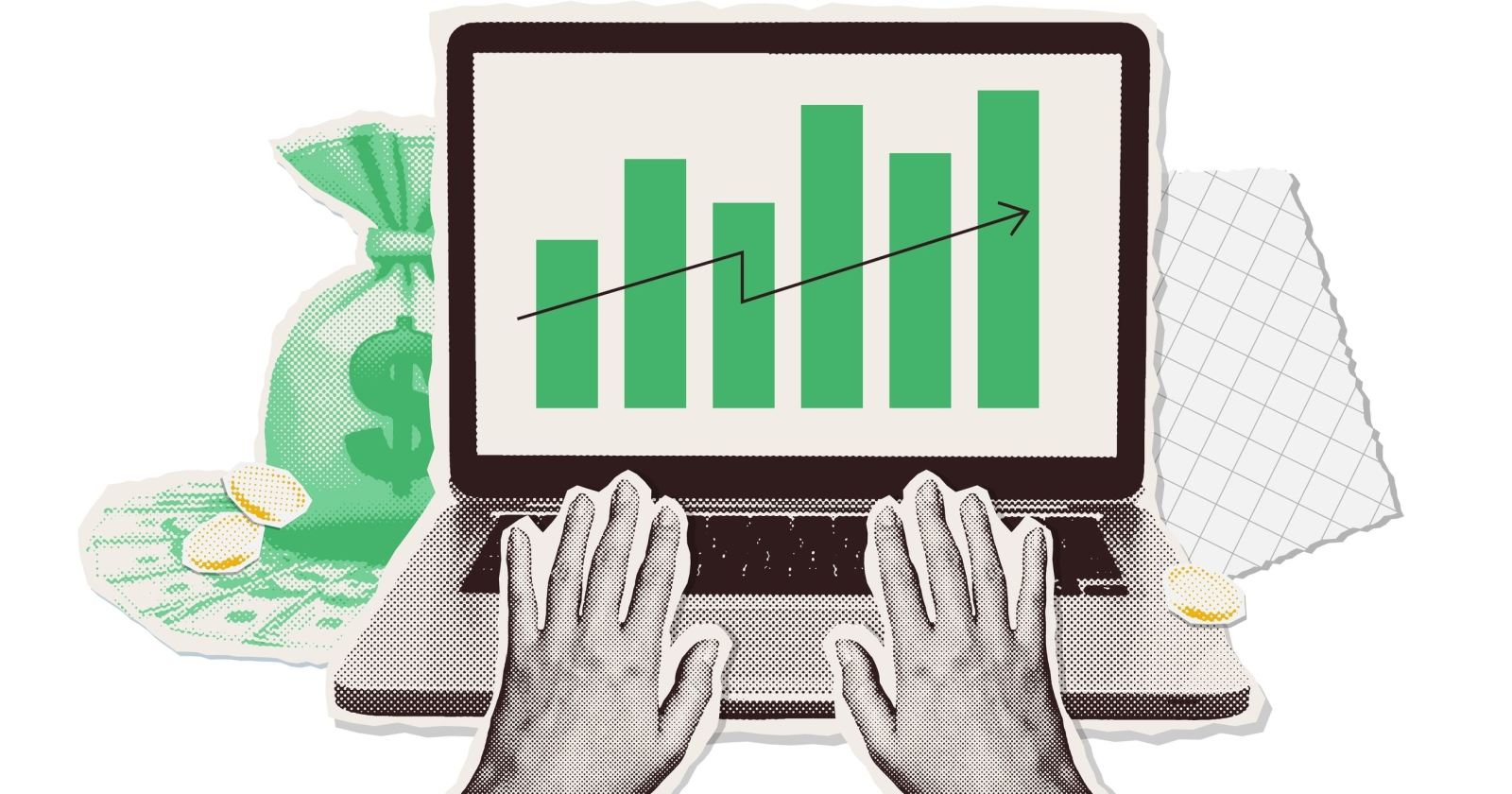A Beginner’s Guide to Optimize Your Website Customer Journey to Get Better Sales
A customer journey map is a visual representation of the path a visitor takes on your website from first entering the site to exiting, showing all the ways they interact with the website along the way, from the desired...

A customer journey map is a visual representation of the path a visitor takes on your website from first entering the site to exiting, showing all the ways they interact with the website along the way, from the desired target face.
Mapping customer journeys can not only give you a good idea of how your visitors use your site, but also show the actions they take to perform certain tasks, identify the pain points they encounter, and find out that they can achieve them. a good goal.
What is Customer Journey Optimization?
Customer journey optimization is the process of connecting and mapping customer interactions, across multiple touchpoints, to guide or influence the end-to-end experience.
Teams focus on optimizing customer journeys and building customer trust. In today’s customer-centric IT economy, the challenge is to integrate multiple channels (mobile devices, websites, social media, and voice) into a seamless customer journey.
The omnichannel customer experience (CX) enables the optimization of the customer journey, where customers can use multiple channels for the same interaction or need. A customer journey management strategy is an essential business requirement to remain competitive.
How To Create a Customer Journey Map
Creating a customer journey map can seem repetitive, but the design and tools you choose will vary from map to map. Remember: customer journeys are as unique as your customers.
Step 1: Understand your buyers
Before creating a journey map, it is important to know a clear purpose so that you know who you are creating the map for and why. Marketers help define customer goals, providing a deeper understanding of their needs and preferences.
Other details make the characters more realistic, which means you have to do good market research to get the data. Start by creating a strong profile of your buyer with demographic information such as age, gender, occupation, education, income, and geography. When this is the case, you will need to get psychographic data on your customers. This type of information can be more difficult to collect than demographic data, but it is useful for understanding customer preferences, needs, and wants.
Step 2: Choose your target market
When you’ve created several customers, it’s time to do a “deep dive” into each one to build an accurate picture of their experience. Start by analyzing their first interactions with your brand and map their movements from there.
Step 3: List the customer’s touchpoints
Every relationship or engagement between your brand and a customer is touchy. List all the touch points in the customer journey, considering everything from the website to social channels, paid advertising, email marketing, third-party surveys, or comments.
Step 4: Identify customer behavior
Once you’ve identified all of your customer touchpoints, find out what your customers are doing at each stage. By breaking down the journey into individual actions, it will be easier for you to improve each small link and move them along the tunnel.
This is the best time to tell the people you created. Understanding the customer will help you solve the problem.
Step 5: Understand your available resources
Creating a customer journey map provides a picture of your entire business and shows every resource used to create the customer experience.
Use your strategy to identify touchpoints that need more support, such as customer service. Determine if these resources are sufficient to provide the best customer experience. Plus, you can accurately predict how existing or new assets will impact your sales and maximize ROI. This will also help you better understand your site traffic.
Step 6: Analyze the customer journey
An important part of creating a customer journey map is analyzing the results. As you analyze the data, look for signs that may cause customers to leave before making a purchase or areas where they may need additional assistance.
Reviewing your final map should help you identify areas that meet customer needs and find solutions for them.
Step 7: Take action
Having a visualization of how the journey is guaranteed that you continue to meet the needs of customers at any time gives your business a clear direction for the changes it will best respond to.
Every difference you make from then on will promote a smooth journey because it will solve customer problems. A great way to test your variations to find out what helps your customers the most during their user journey is to take advantage of A/B testing.
Customer Journey Map Templates
You can choose between four different types of customer journey maps, each with its own advantages. Depending on the purpose you have for the card, you can choose the right one.
Current State
These customer journey maps are the most commonly used types. They visualize the behaviors, thoughts, and emotions your customers are currently experiencing when interacting with your business. They are best used to improve the customer journey regularly.
Day in the Life
These customer journey maps visualize the behaviors, thoughts, and feelings your customers are currently experiencing in all of their daily activities, whether that involves your business or not. This model provides a broader understanding of your customer’s lives and their real-life pain points. They are often used to meet unmet customer needs before customers even know they exist. Your business can use this type of customer journey map when evaluating new market development strategies.
Future State
These customer journey maps visualize the behaviors, thoughts, and feelings your customers will have on your future interactions with your business. Based on their current experience, you will have a clear idea of where your business fits. They are used effectively to express your vision and set clear strategic goals.
Service Blueprint
These customer journey maps start with a simple version of the same type of map above. Then, they turn to the elements responsible for delivering that experience, including people, policies, technology, and processes. They are best used to identify the root causes of current customer journeys or to identify the steps necessary to achieve desired future customer journeys.
How To Optimize the Customer Journey
Focusing on the customer experience is the best strategy to retain customers throughout the journey and beyond. The question becomes: what can we do to improve this?
Here are 5 tips for improving the customer journey using the best customer experience and the latest technology.
Let’s take a look:
1. Map and Analyze The Customer Journey
The first thing you need to understand is where you are now and what improvements should be made to get you where you want to go. In customer journey optimization, this is called “mapping” and it gives you a good baseline against which to measure future efforts.
At this point, you’ll want to look at customer engagement metrics and combine them with a deeper understanding of each part of the customer journey. Here, it will be important to remember that you need to look at things from the point of view of the customer, not from the point of view of the internal business.
2. Collect Customer Feedback
Once you’ve mapped out your current efforts in the customer journey, it’s time to see if your ideas match those of your customers. That means it’s time to collect customer feedback. There are different ways to do this. Ideally, you should be able to reach customers using several different methods to get the widest possible response.
That being said, Aumcore recommends using SMS marketing to communicate directly with customers and gather feedback. Many companies do this because it’s better for the customer, while it gives you better results because it’s more like a conversation instead of a one-sided request. In addition, engaging customers in conversations allows them to be heard and can improve their customer experience.
3. Focus on Engagement and Customer Experience
Speaking of customer engagement, the next step in improving the customer journey is figuring out how to create the best experience at every stage of the journey. For example, if customers are struggling with the onboarding process, a common challenge, you should focus on that area. Fortunately, in today’s digital world, there are many options for reaching customers.
For businesses that have not yet invested in omnichannel marketing, now is the time to start. When you have many different channels to engage the customers, not only can you organize the content, but you can also be useful instead of boring.
4. Follow Everything You Can
Once you’ve taken the time to implement the ideas you’ve gathered for improving customer relations, the next step is to track each of these new strategies to see how they work compared to your previous efforts. Although you should already have these steps in place for tracking and verifying your donation, if you haven’t, you should do so here.
However, thanks to new improvements in machine learning technology, current customer surveys can be used to predict future interactions, not just past ones. Enthusiastic marketers can use this technology to analyze their data and try to solve customer problems before they get out of control. Being one step ahead of the customer is the idea behind optimizing the customer journey and it will set you up for success.
5. Invest in Your Employees
Finally, the last way to improve your customer journey is not to interfere with your relationship with the customer. Instead, it requires an analysis of your business processes and how you can invest in your people to ensure future success. It turns out that the best way to improve the customer experience is to focus on the experience of your employees. If your team believes in what they do, your customers will see it and want to know more.
This can manifest in different ways, depending on your company. However, there are some things like mandatory customer service training and easy access to valuable information that can improve the customer experience for any business. Take the time to analyze customer insights with your team, then send them questions to see how you can improve their own journey. In the end, everyone wins.
Conclusion
Once you have a better understanding of the customer journey, you can use that knowledge to improve your site by eliminating third-party processes, reducing pain points, tailoring your messaging to meet customer needs, and even creating content. to help educate and support the client as a client. they go through your site.
These changes, because they correspond to the customer journey, will ensure that your website provides customers with a smooth and positive interaction, which leads to a better user experience.

 BigThink
BigThink 

































